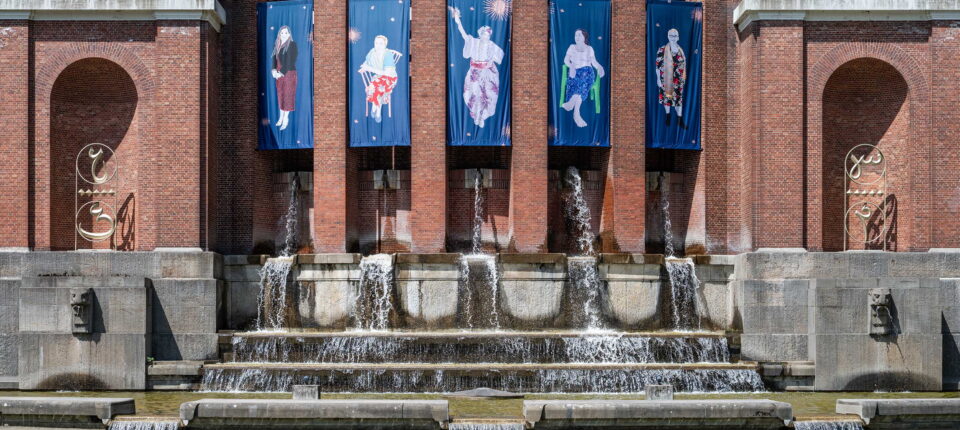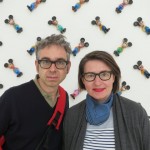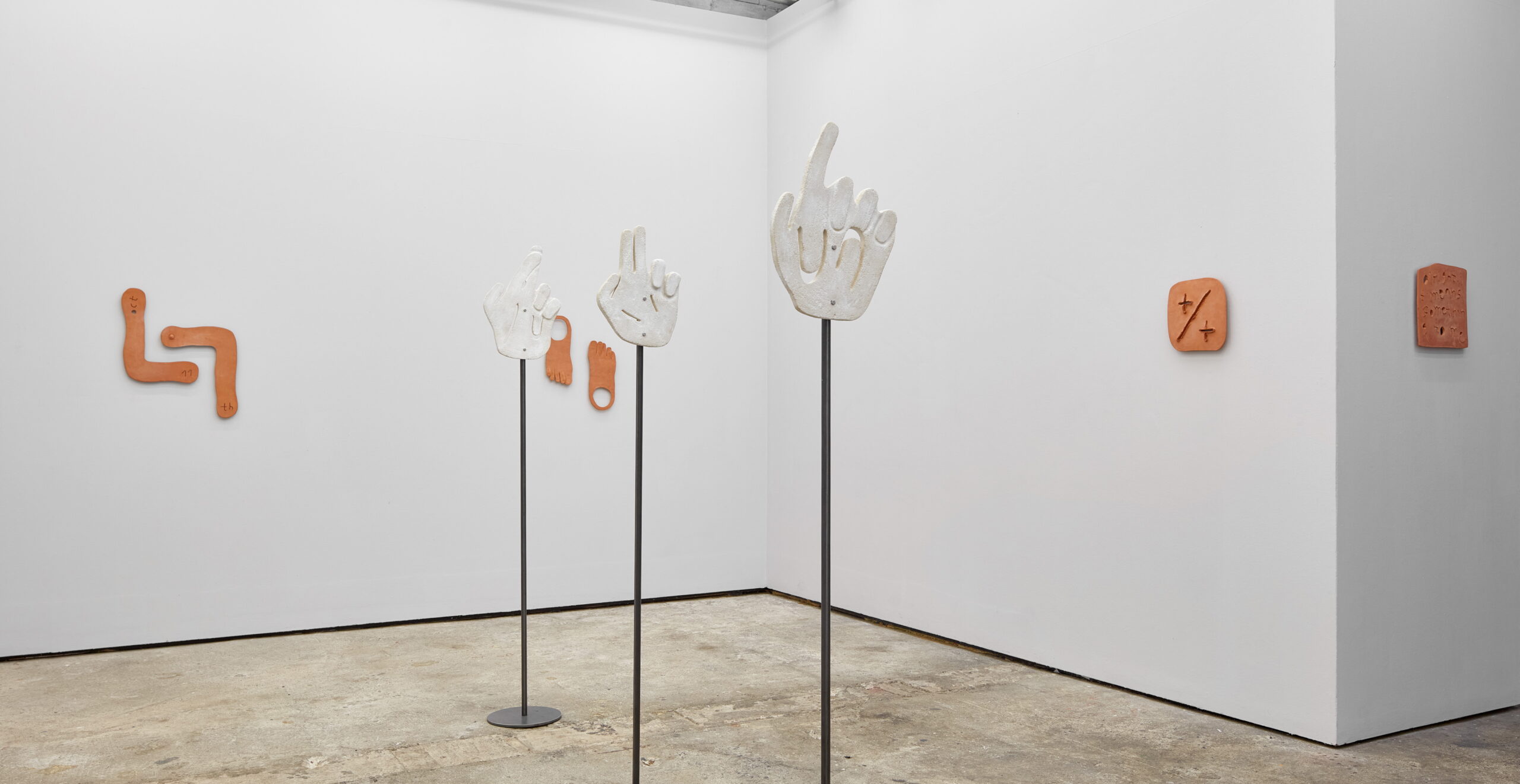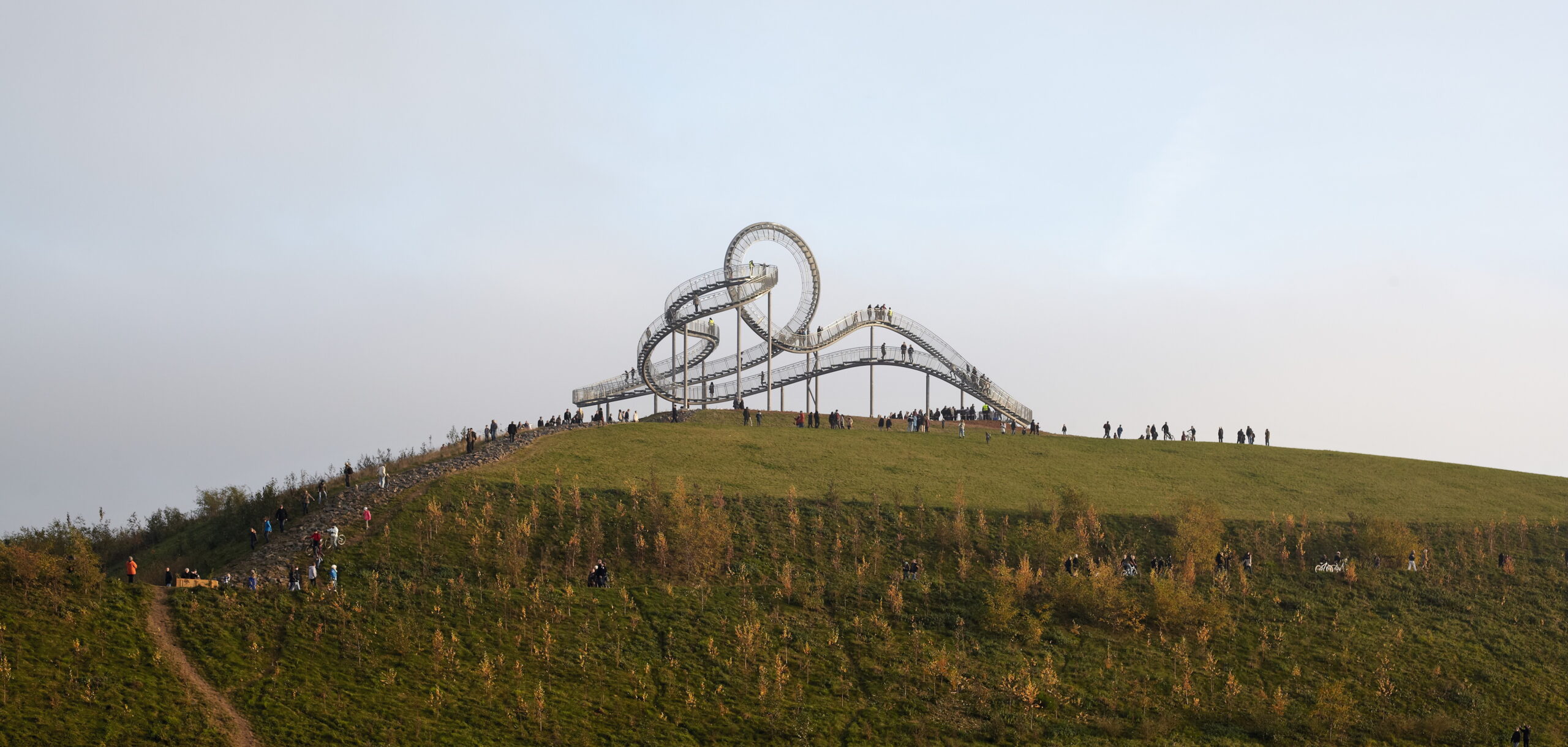Hamburg has long been a pioneer in public art. In the last couple of years, however, the city’s commitment to this field has somewhat waned. But with the recent appointment of the internationally renowned curator Joanna Warsza as the new „Stadtkuratorin“ (City Curator) the city is repositioning itself as a driving force. Nicole Büsing and Heiko Klaas sat down with her to talk about her projects and plans

Porträt Joanna Warsza, Foto: © Maciej Landsberg
Nicole Büsing & Heiko Klaas: Hamburg has a long tradition of art in public spaces, which unfortunately has come to a standstill for extended periods of time for various reasons. As the third city curator, you now finally have the opportunity to develop and implement a consistent program over five years. What appeals to you about this job? And what is your primary focus?
Joanna Warsza: Stadtkuratorin is a unique position dealing with the complexity of art in public spaces, and I am thrilled I can write its new chapter. The Stadtkuratorin office has now found a new home at the Kunsthaus Hamburg, and it is from there that I am traversing different Hamburgs and finding ways to connect them. I have always liked the thrill of working with art outside of the protection of institutional walls. Institutions are important but they come with their own codes, barriers, the mechanisms of intimidation, and not everyone feels at ease there. Public art is more accessible, more vulnerable: it sits in the middle of the mess and plurality of an urban life, it doesn’t have the pretension to be the most important, and it always needs to negotiate its existence within various contexts and cultures.
I bring to this role not only some experience in public space in various cities––Tbilisi, Warsaw, Prizren, Munich, Berlin, Montevideo––but also many biennial experiences. My recipe is simple; it requires both the excitement of a biennale-like format, but built in a slow and more sustainable manner, without the exhaustion. We’re planning five summer exhibitions across five years, dealing with the five elements: first with the Cosmos in 2025, then Fire, Air, Earth, and Water, often with artworks coming back or stretching across time. Our main horizon is a question of planetary thinking and the so-called planetary public sphere, using them to fundamentally reconsider our relationship with the Planet, or more simply put, as Achille Mbembe says, “from the act of breathing.”

Olu Ogannaike: A Good Neighbour, 2025, Foto: © Daria Kulnina
NB & HK: Art in public spaces is visible not only to the few who go to museums or other art institutions, but to everyone. At the same time, social interaction is drifting further and further apart. What opportunities and risks do you see in this?
JW: You might see public art by accident as you would meet a stranger, and you do not have to be prepared for such an encounter. It can be part of a walk, a date, or a school trip. In our cities that are so overburdened with consumption and advertisements, it is important to send signals to each other which are based on languages of complexity, nuances, subtexts, or philosophy. This is why public art is crucial today. What needs to be changed is the pluralization of the public sphere, and the understanding that we are still very much operating in cities that have been designed by a Western and predominantly male gaze.
I see public art as a way to meet with (and despite) our differences. I also see it as a way of pluralizing the public sphere beyond cancel-culture and looking for connections between each other, while acknowledging our differences.
NB & HK: Hamburg prides itself on being an international city. It likes to call itself a „gateway to the world.“ But is that actually true, or do the different communities rather coexist side by side? How could art in public spaces act as a catalyst for better coexistence?
JW: Our first exhibition, around the element of Cosmos, is at the moment in the Stadtpark Hamburg and the Planetarium. This park was the first official public space of the city, and it is still very much used as such, with many various communities feeling at ease there. Those informal places need to be cherished as a pocket of the Commons, as places where politics can be also understood in a bottom-up manner. For example, a Grillwiese can be seen as a safe environment for many religions, cultures, ways of belonging in our more and more post-migrant society. Similarly, art can be a catalyst for better coexistence without forcing it. We all know that participation looks good in pictures, while it is actually much harder to foster in real life. Hamburg is today one of the most open German cities, but not necessarily in a way that it likes to brag about.
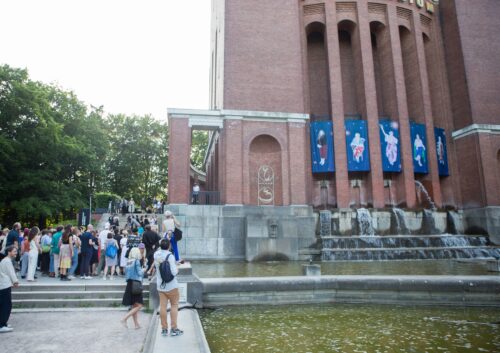
Malgorzata Mirga. Tas Herstories, 2022 fortlaufend, Timo Nasseri: Unknown Letters, 2015-25, Foto: © Daria Kulnina
NB & HK: In the very first part of your five-summer program, you succeeded in bringing the brick tower, originally built as a water tower and now used as a planetarium, into the focus of public interest for your exhibition in the Stadtpark, a location that was primarily of interest to a specific audience only. Do you have similar coups in mind for other prominent locations in the city for the next four editions?
JW: It is here at the Hamburg Planetarium that Aby Warburg––in collaboration with Gertrud Bing and Fritz Saxl––realized his only permanent exhibition on astrology and astronomy, which was later completely forgotten and much later discovered on a pile of trash by Uwe Fleckner, who was in those days student, and today a director of Warburg Haus. We are thrilled to present this hidden treasure again in Hamburg. And by arching Warburg’s historical interest in the planets with our understanding of planetary consciousness today, his ideas land in the reality of the Stadtpark in the visions of 12 works orbiting the central exhibition.
Simultaneously, we are also working on the topic of the Fire for next summer. We understand Fire as a transformation of what might be apocalyptic into something emancipatory, in which you need to rethink yourself anew and set free. This research leads us to many interesting places, including sites across the city which tragically burned and were rebuilt over the years, but also for example, the Energieberg, which is built on toxic waste, but over time, converts it into new, sustainable energy. An exhibition is always a result of different forces, unrehearsed encounters, tensions and surprises. Curatorially I am interested in connecting the high and the low, the serious and the funny, the complex and the mundane, just like in real life.
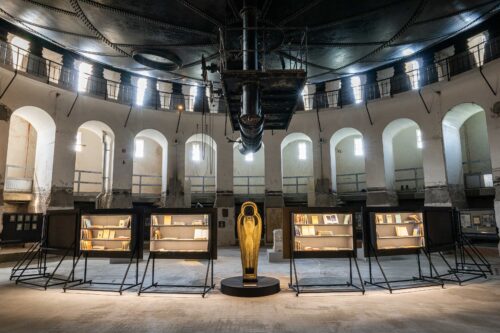
Bildersammlung – Image Collection, Foto: © Maik Gräf
NB & HK: A second pillar of your work is the „Counter-Monuments“ program. It focuses on artistic commentary on controversial monuments dating back to the darker periods of Hamburg’s history. Is Hamburg more burdened in this regard than other cities? And what kind of artistic interventions and commentaries do you have in mind?
JW: Our second series, called Counter-Monuments, Gegendenkmäler, is thought to be like an acupuncture of the city. It explores the fascinating history of antifascist memorials in Hamburg, which we will awaken symbolically by various actions and interventions. In doing so, we will also maintain and renovate many of them, in collaboration with the BKM. Several artists have already been invited to respond to those memorials, such as Chto Delat to Hier und Jetzt (1997) by Gloria Friedman and Candice Breitz to the Harburger Mahnmal gegen Faschismus (1986-1993), as well as Liz Rech in Baakenhafen and others. These projects relate to what those memorials initially interrogated in the first place: What does it mean to live an antifascist life, both in Western and Eastern Europe, in a post-migrant society, yesterday and today, in a world full of cruelty and wars?
NB & HK: Your first exhibition already features an exciting mix of local and international artists. How do you network within the respective art worlds? Are you planning collaborations with similar projects elsewhere in the world? For example, in Hamburg’s numerous sister cities…
JW: I tend to follow the life of a Familiar Stranger, a concept devised by the cultural scholar Stuart Hall, between estrangement and familiarity, or trying to see things from near and far at the same time and to live with both of them. I am curious about the Hamburg art scene and have met several wonderful artists here already. I bring other worlds here and this world outside. And yes, Marseille, Osaka or Dar es Salaam are also on my mind. There is always so much to learn and unlearn.
NB & HK: Joanna, thank you very much for the interview.
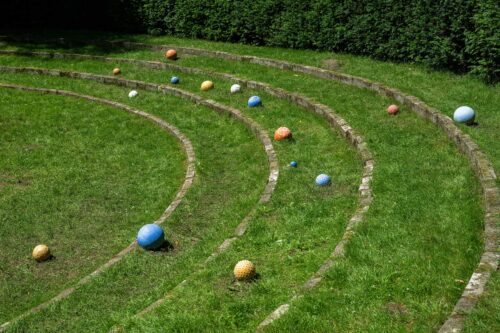
Heidi Voet: Hydra the Orange Giant, 2025, Foto: © Maik Gräf
Auf einen Blick:
Ausstellung: From the Cosmos to the Commons
Ort: Planetarium und Stadtpark Hamburg
Zeit: bis 24.8.2025. Die Arbeiten im Stadtpark sind rund um die Uhr frei zugänglich. Die Ausstellung im Planetarium von Do-So jeweils 13:30 – 18 Uhr. Reservierung eines Zeitfensters erforderlich. Tickets unter www.planetarium.de
Internet: www.stadtkuratorin-hamburg.de
Außerdem zu sehen:
Ausstellung: From the Cosmos to the Commons – Between Stars and Signals
Ort: Kunsthaus Hamburg
Zeit: bis 17.8.2025, Di-So 11-18 Uhr
Internet: www.kunsthaushamburg.de
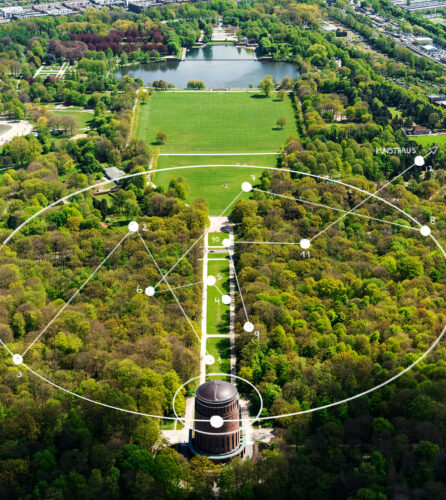
Konstellation From the Cosmos to the Commons, Foto: © José Delano

